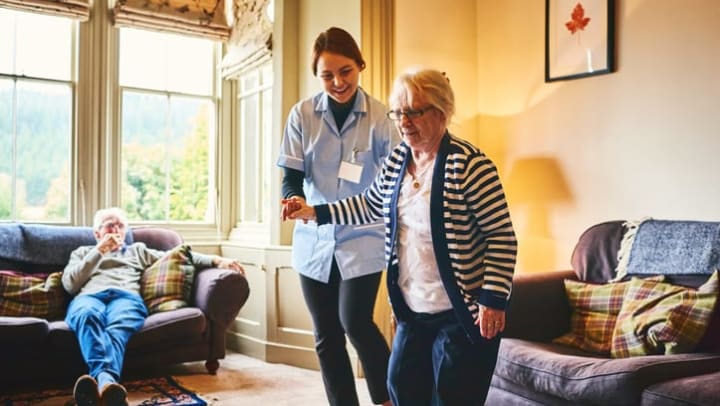This month, our True Cost Series looks at the differences between managing your health care in a senior living community versus managing it as you age in place. Brightwater Senior Living has some points for you and your senior loved one to consider.
Access to Health Care
When aging in place at home, a senior has a lot on their plate to make their health care a priority. Scheduling alone can be difficult, especially if they are already struggling with health issues. Making appointments and finding transportation can mean reaching out to others, something that seniors can grapple with given their strong sense of independence. And, if you live by yourself, you may not be aware of your changing health care needs as they occur. This lack of self-awareness makes asking for and accepting help even more difficult. Where you live in proximity to hospitals and clinics, and your family, can also add to the cost of health care.
Senior communities offer multiple living options, and health care professionals are available onsite 24/7 to help you with your every need – from medication management to health monitoring to safety concerns to emergencies. The care level you choose is based on your needs – Independent Living, Assisted Living, Memory Care, and, in some cases, short-term stays. Chores like cooking, cleaning, laundry, transportation become a thing of the past, putting your safety and security as the No. 1 priority. Your health has every opportunity to flourish in a senior living community that assists you with tasks of daily life like showering, grooming, and dressing.
Socialization Opportunities
AARP Foundation research suggests that 1 in 5 Americans 65 and older are socially isolated. This can be the downside of aging at home, especially if you live with a partner who needs care or if you live alone. Research has shown that isolation can set off a domino effect of health care issues like increased blood pressure, earlier onset of dementia, and greater susceptibility to infectious diseases. On the flip side, in a senior living community, there are so many activities and social opportunities to stay connected that it might be hard to choose. At Brightwater, our community is designed to provide every opportunity for connection – fitness rooms, cultural classes, crafts, discussion groups, field trips, group dining, common spaces, and more. Adjusting to a community like this can take time for seniors, and it’s important to support your loved one, allowing them to first get their feet wet. If they are skeptical, encourage them to try more independent activities or even just head to a common room for a meal or coffee.
Aging Together
Aging at home as a senior couple has its own unique challenges and costs. There is typically a primary caregiver who puts the partner’s needs first and might ignore or minimize their own. Their role becomes that of scheduler, medication manager, transportation coordinator, and all-around mental and physical support system. This can become increasingly harder as a senior caregiver ages. If they experience their own health issues, like a fall or surgery, caregiving duties are delegated to someone outside the home, increasing costs for the couple and potentially also for a family member. There is also the burden of consistent maintenance of a home and property – daily chores, yard maintenance, groceries, cooking, cleaning, and more.
In a senior living community, couples are free from the heavy burden of sole caretaker. They can, of course, maintain a certain level of care for their partner, but with 24/7 nurses and staff, there’s always someone available when the role requires health expertise. Senior communities allow you to see your partner very easily, even if they are recovering from a health, illness or have moved into a different level of care. You still have your partner with you in your new home, and the support you both need is available all the time.
For more senior living considerations, visit the Brightwater Senior Living blog.
